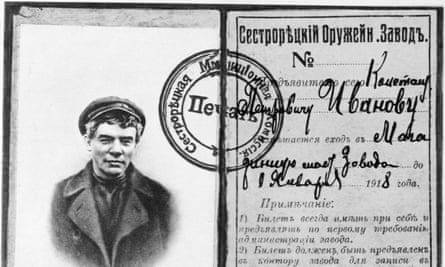Rare and largely unseen images of Lenin from a vast British archive which for nearly a century has been promoting cultural relations between the UK and Russia are to go on display in Oxford.
The photographs include Lenin in disguise, almost unrecognisable in makeup, wig and clean shaven, and show a less well-known side to the ruthless revolutionary leader: Lenin the cat lover.
The photographs are all drawn from the archives of the British Society for Cooperation in Russian and Soviet Studies (SCRSS), which was set up in 1924 to foster good artistic and scientific links, in a exhibition timed to coincide with the centenary of the revolution that brought Lenin to power.
Its main early supporters were from the Bloomsbury set – people such as John Maynard Keynes, Virginia Woolf, EM Forster and George Bernard Shaw.
The Soviet Union may have gone but the society, based in Brixton, south London, continues today. “Russia and the Soviet Union continue to fascinate people,” said Ralph Gibson, honorary secretary of the SCRSS. “Every aspect of its history, culture and language has been a key part of the 20th century.”
Most of the photographs are being shown publicly for the first time and while some images will be familiar to experts, “for the vast majority of people they will be something new, they won’t have seen them in an exhibition context,” Gibson said.
There are many striking images, including the photograph of Lenin without his familiar bald head and manicured goatee, produced for his fake ID card when he needed to flee Petrograd in 1917 and cross the border to Finland.

A photograph taken by Lenin’s sister Maria in 1922 shows him stroking a cat at his residence in the village of Gorki, near Moscow.
The exhibition at the North Wall arts centre in Oxford marks the centenary of the Bolshevik revolution and aims to explore the lives of ordinary people in the years after the uprising.
They range from Georgian mothers being taught to write for the first time, to a photograph of smiling babies in tin saltwater baths at Nursery No 5 of the 8th Tobacco factory in Moscow – a reflection of the revolutionary zeal to properly look after and educate Russian children.
